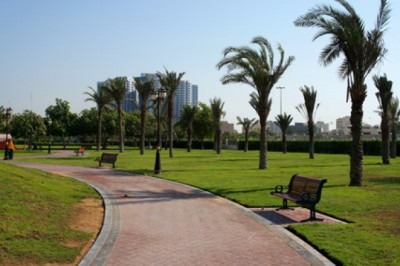
Dubai, United Arab Emirates — Driven by a rebounding economy and a burgeoning demand for sustainable living and working spaces, the regional interior design market is emerging as a growth driver for the construction sector, which is projected to grow at CAGR of 4.69 percent by 2027, reaching a value of US$133.53 billion by 2027.
This, according to interior design industry experts, is expected to make the sector even more attractive to local and international suppliers, which will in turn expose interior designers to a wider choice of products for their projects.
According to the Tile of Spain spokesperson, the regional construction industry has over the last couple of years developed a growing appetite for sustainable and region-centric ceramics.
“We have noticed a steady shift towards consumer preference in terms of the kind of ceramic tiles they want in their living spaces. There’s a growing demand for products that conform to the region’s unique environment and also products that are environmentally friendly not just in their application but also in their manufacturing process. This is why our membership as ASCER is keen on tapping into this emerging niche market with region-centric ceramic tiles for multiple applications in the UAE and GCC regions,” said Alberto Echevarría, Secretary General of ASCER (Spanish Ceramic Tiles Manufacturers Association).
Growing the tile category
Recent shift in consumer behavior, especially after the global COVID-19 pandemic, has shown a sharp preference for all things environment-friendly. Ceramics is labeled as the tile of sustainability and rightly so since it’s natural, safe, durable, and recyclable. That they are resistant, easy to install, and super versatile when it comes to application across spaces; are some of the many other factors contributing to their popularity. They are simply ruling the interior design spaces across segments in the region, especially in the UAE and Saudi Arabia.
“Ceramics have a long history of being associated with the past or being out of style and appearance. To combat this, we have created cutting-edge design and technologies that benefit both human health and the environment. And the most recent export statistics provide compelling evidence to that. Spanish ceramic tiles are not only good for our health because they reduce all of the negative side effects associated with traditional building materials, but they are also good for the environment because they are made entirely of natural materials and combat the effects of climate change while also being extremely beautiful,” noted ToS Spokesperson
Since 2021, ceramic tile exports have increased dramatically, reaching US$3.5 million, a 24.6 percent increase over 2020.
At the same time, increasing consumer confidence, the return of international travel and rising property prices are enabling renewed private investment in commercial real estate projects. With exports from ASCER expanding in more than 180 countries with the Middle East accounting for 14.6% of total ceramic tiles import into the region.
Driving the UAE 2030 vision
With technology advancements, world-class manufacturers Tile of Spain have embraced design innovation to promote sustainability. Bioclimatic architecture, for instance, is committed to taking advantage of environmental conditions to reduce energy consumption. From improving the performance of ventilated facades to the ability to self-clean surfaces with oxidation to destroy organic matter; a variety of distinctive features are making ceramics a preferred choice.
The GCC region’s leading city skylines have undergone a phenomenal transformation in the last few decades. However, there hardly is a match for its appetite to explore innovative solutions. With the Spanish tile industry introducing photovoltaic panels; architects and interior designers have been seamlessly combining modern designs with integrated ceramic facades to cash in the environment-friendly benefits of producing electrical energy from solar radiation. Consumers rooting for sustainable living are considering this tech integration for roof cover, acoustic insulation, and even photovoltaic technical floor systems.



















Facebook Conversations
Disqus Conversations